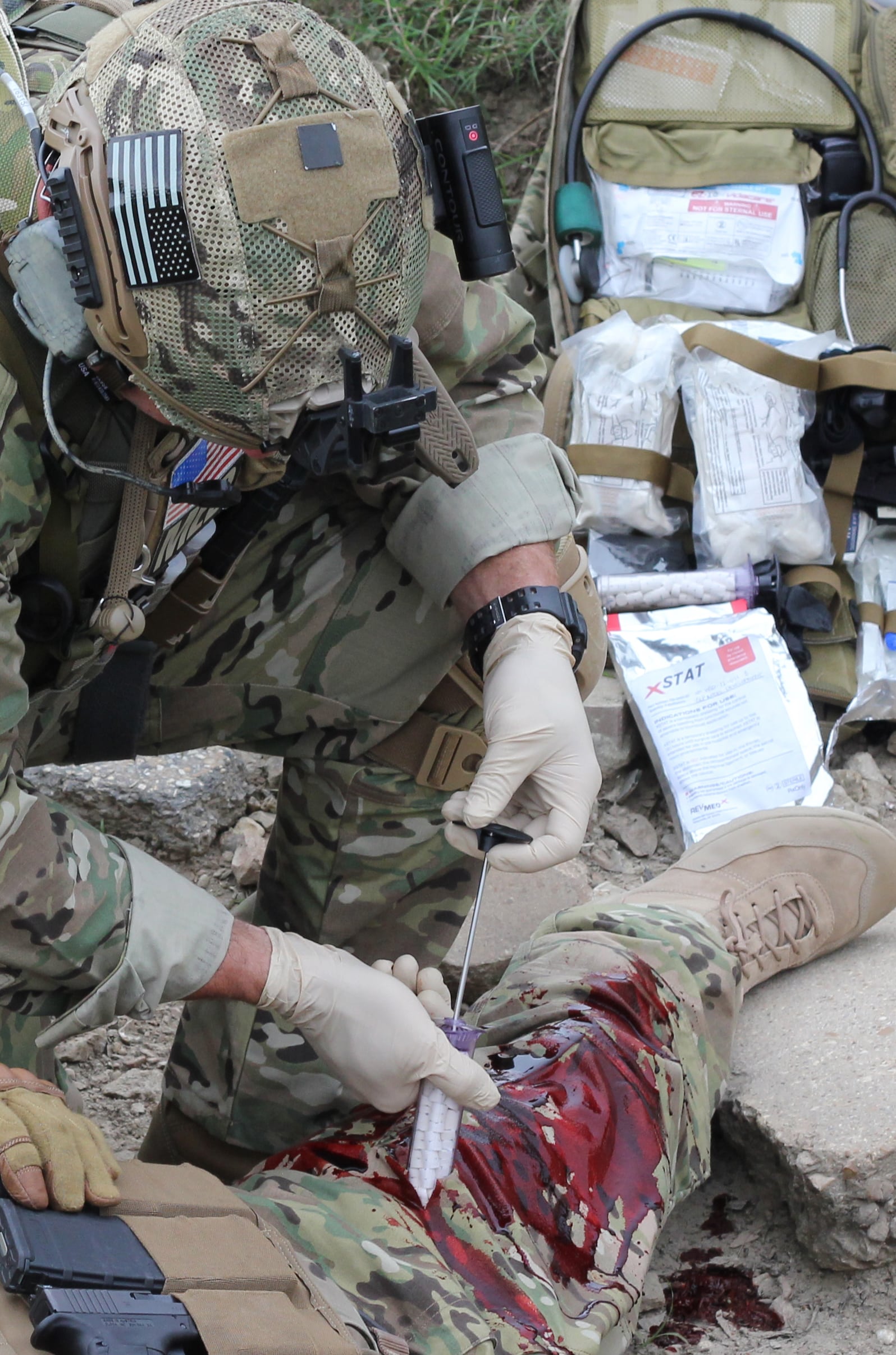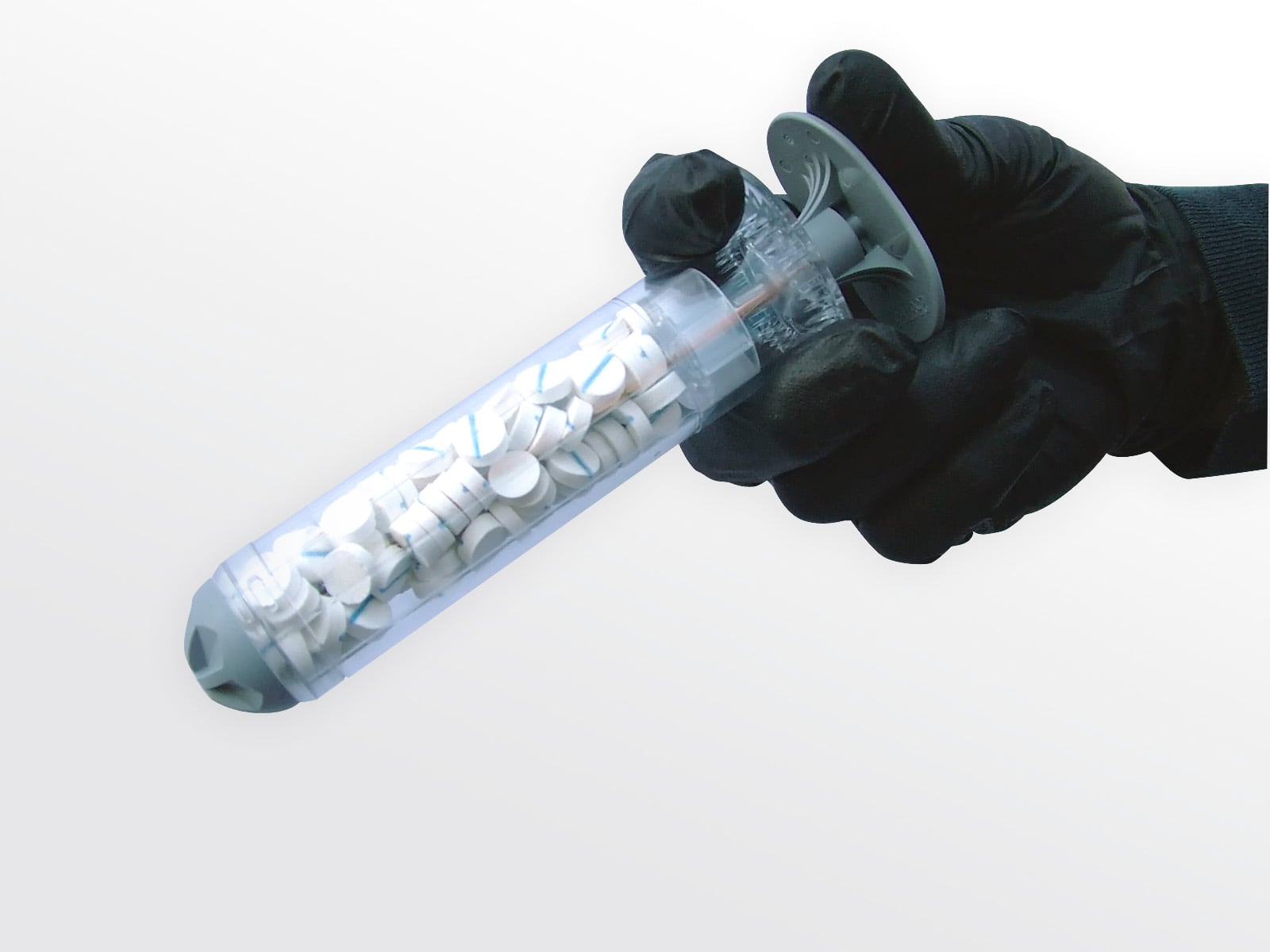When all else failed to stop the bleeding of a coalition soldier's leg wound, the forward surgical team reached for the XStat-30.
This new technology — essentially a bunch of tiny sponges — stemmed the bleeding and stabilized the soldier. It marked the first confirmed use of the product on a human according to the company, and its debut saved a life.
After arriving at the forward operating base, the surgical team removed the tourniquet applied in the field, Fox said. They had were having extreme difficulty trying to stop the bleeding where the bone-shattering bullet had created a cavity, or a deficit wound. They tried to cauterize the wound, insert bone wax (a wax used to control bleeding from bone surfaces during surgery) and they tried to stuff it with gauze; none of these measures stabilized the patient, Fox said.
XStat consists of a pocket-sized syringe-like device full of 92 disc-shaped sponges made of special sterile cellulose and coated with chitosan, a clotting agent. Sponges expand to about 10 times their size, providing hemostatic pressure and blocking blood flow. That gives doctors time to make repairs before the patient bleeds out. XStat sponges can be removed incrementally, and each has a marker visible by X-Ray to ensure none gets left behind.
"We are working with the vendor to reduce the overall cost of the device and increase their limited production. Once these items have been addressed, we will explore options to further expand this capability," Allen told Army Times in an email.
Allen confirmed the basic details of the first use but said he was not aware of the other applications. Fox said the price varies by contract and packages size but in general cost "several hundred dollars each." He said several hundred have been distributed to the military so far. Each XStat has a shelf life of about three years.

XSTAT by RevMedx, uses a giant syringe-like injector to insert dozens of small sponges coated with a blood-clotting agent into a wound site. There they absorb blood and expand to help stop bleeding.
Photo Credit: RevMedx
Situations where the Food and Drug Administration has prescribed XStat for use remain somewhat narrow. And the first use didn't exactly fit. First, it's generally a front-line first-aid tool, rather than a last resort for the forward surgical team back at the forward operating base. Second, XStat's usage instructions are for limb-torso junctures in the body where tourniquets can't really be applied.
While the tourniquet was used as first aid in the field per protocol, the surgical team decided to use XStat once their go-to options for dealing with the bleeding during the next steps failed.
"For anything like this, it's always up to physician's discretion," Fox said.
Fox added that the company is working to get the device recommended for broader use, and simply needs to prove it.
"There's a whole bunch of other wounds where we think the XStat would be effective, but it hasn't been proven (to the FDA) in testing," Fox said. "We are working on expanding the indications for use."

The XStat's syringe-like injector is used to insert 92 tiny sponges into an open wound so that they can absorb blood, expand, apply pressure and rapidly stop the bleeding.
Photo Credit: RevMedx
Allen expressed optimism that use of XStat will continue to expand.
"The technology is very promising and has great potential to save lives. Now that the XStat-30 has received full FDA approval, the device may able to be adopted by civilian EMS too," Allen said.
Kyle Jahner covers soldier uniforms and equipment, Medical Command and Recruiting Command along with investigations and other breaking news for Army Times. He can be reached at kjahner@armytimes.com.




